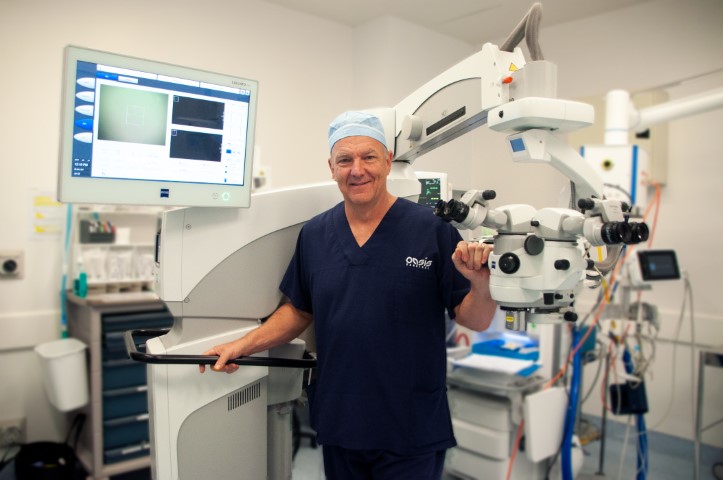Auckland Eye offers intraoperative OCT
Auckland Eye has become New Zealand’s first private clinic to offer intraoperative OCT-guided anterior and posterior segment surgery, following installation of the Zeiss Lumera 700 with iOCT (Rescan 700).
Launched seven years ago, there are now 21 such units in operation in Australasia, four of which are in New Zealand’s public hospitals, said Megane Diforte, Zeiss ANZ surgical marketing manager. “Intraoperative OCT allows surgeons to see beyond the visualisation capabilities of a microscope and offers more control. It provides new insights to the user, which could result in quick decision-making in real time for glaucoma, cataract, retina and corneal procedures.”
The new microscope will be a great asset, said Auckland Eye’s Dr Riyaz Bhikoo. “It will optimise surgical visualisation during macular surgery and help facilitate precise delivery of subretinal therapeutic agents. Dr Sarah Welch and I flew to Melbourne a few weeks ago to observe subretinal gene therapy… having intraoperative OCT now puts us in a fantastic position to deliver these agents and be involved in future subretinal therapeutic trials.”
The ability to visualise structures in three dimensions is also useful for monitoring minimally invasive glaucoma surgery (MIGS) device placement, assessing graft orientation in Descemet membrane endothelial keratoplasty procedures and assessing the interface with the patient’s cornea, said Diforte. “For big-bubble procedures, it enables better evaluation of deep anterior lamellar keratoplasty dissection depth, reducing perforation risk. For novice surgeons performing phaco, the unit can assist in evaluating cataract groove depth prior to splitting the nucleus.”

Dr Dean Corbett
The microscope integrates with other Zeiss technology, such as the IOL Master 700 and Callisto toric alignment device, to ensure optimal correction of astigmatism, said Auckland Eye’s Dr Dean Corbett. It also has an “excellent video camera, allowing for greater participation of staff and teaching for aligned professions, such as optometry,” he said.


























